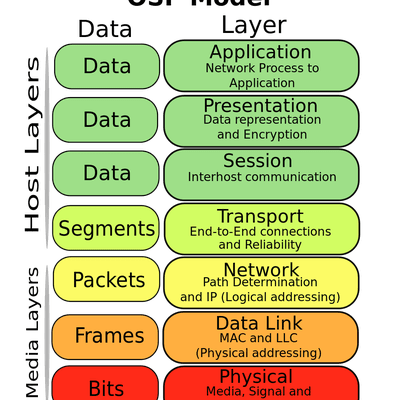Open Systems Interconnection (OSI) Mode
The Open Systems Interconnection (OSI) model defines a networking framework to implement protocols in layers, with control passed from one layer to the next. It is primarily used today as a teaching tool. It conceptually divides computer network architecture into 7 layers in a logical progression. The lower layers deal with electrical signals, chunks of binary data, and routing of these data across networks. Higher levels cover network requests and responses, representation of data, and network protocols as seen from a user's point of view.
The OSI model was originally conceived as a standard architecture for building network systems and indeed, many popular network technologies today reflect the layered design of OSI.
/basics_osimodel_physical-56a1ad0d3df78cf7726cf781.jpg)
/basics_osimodel_datalink-56a1ad0d5f9b58b7d0c19c59.jpg)
/basics_osimodel_network-56a1ad0d5f9b58b7d0c19c5c.jpg)
/basics_osimodel-56a1ad0c5f9b58b7d0c19c53.jpg)
/basics_osimodel_application-56a1ad0d3df78cf7726cf77e.jpg)

No comments:
Post a Comment